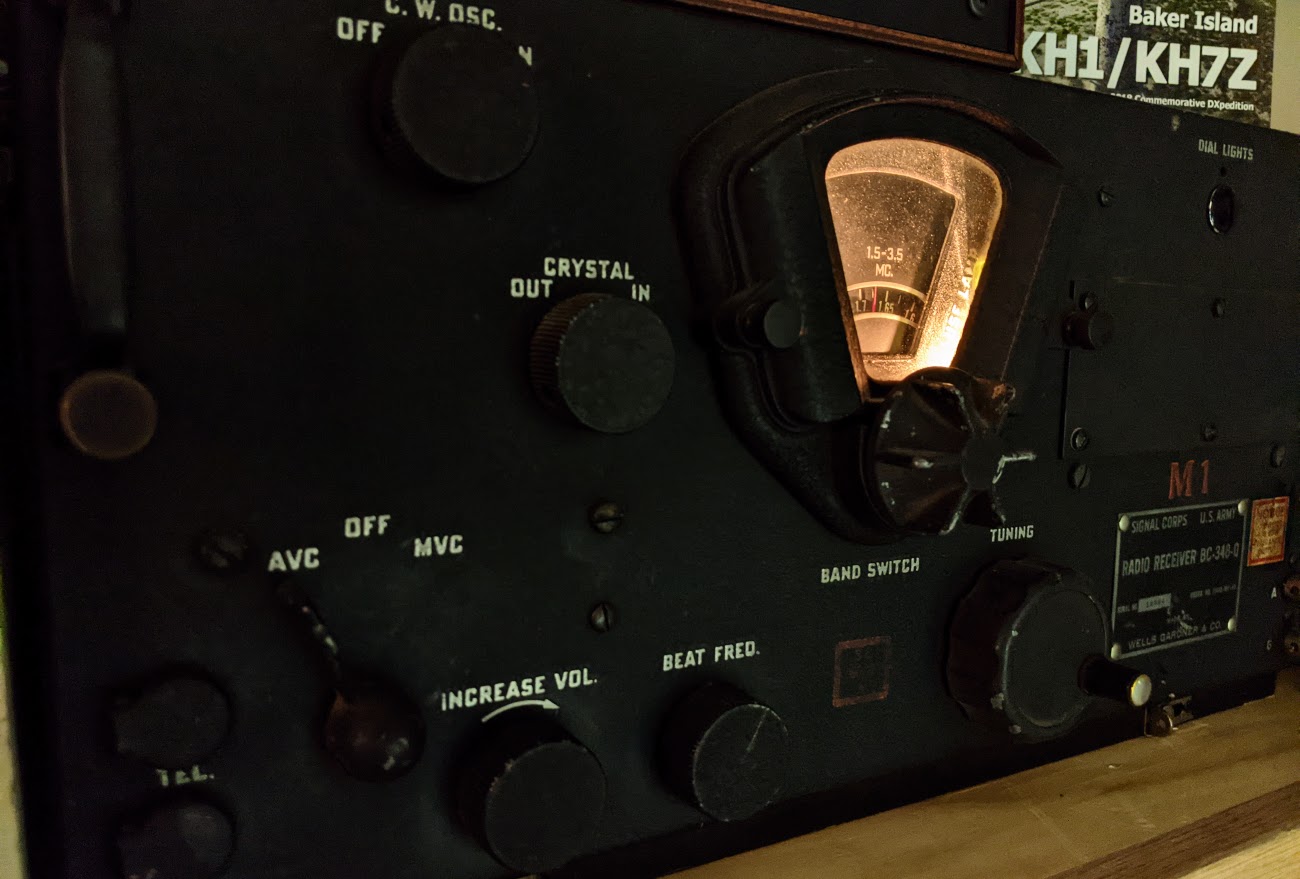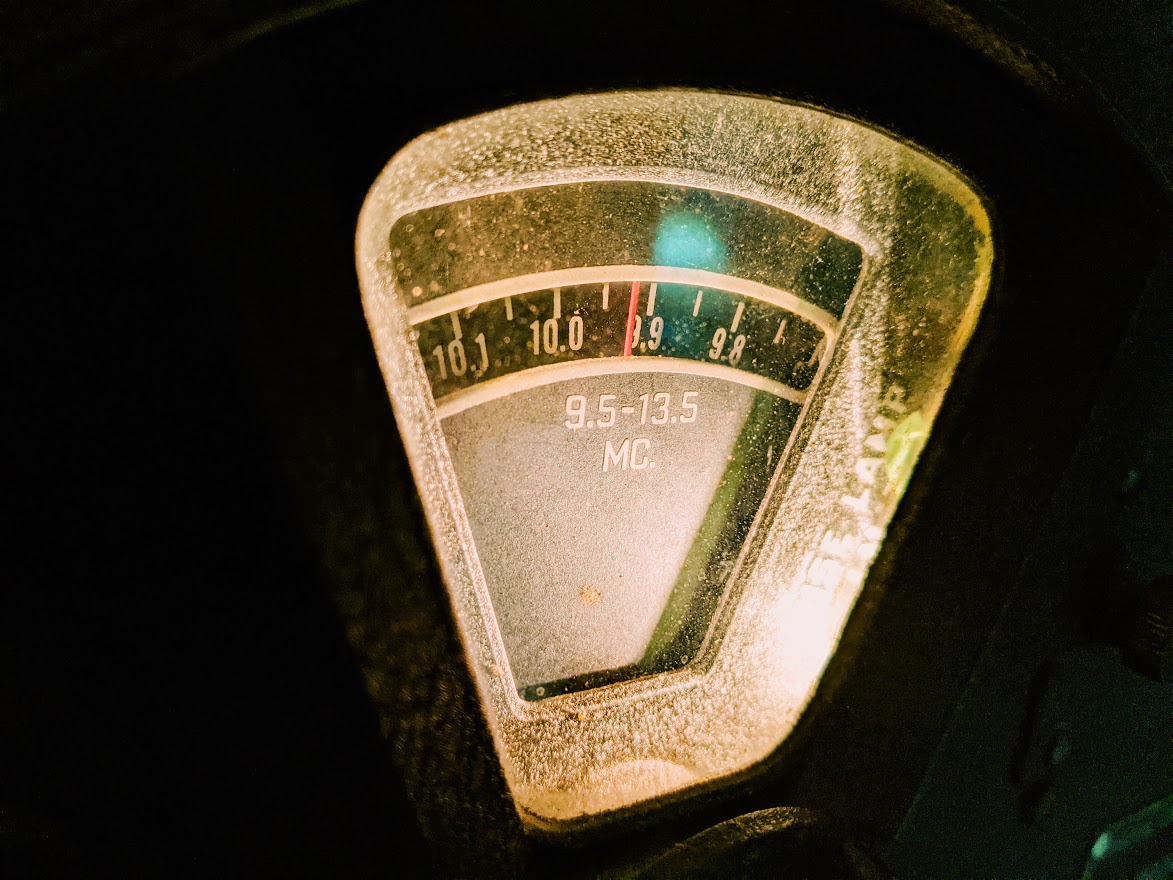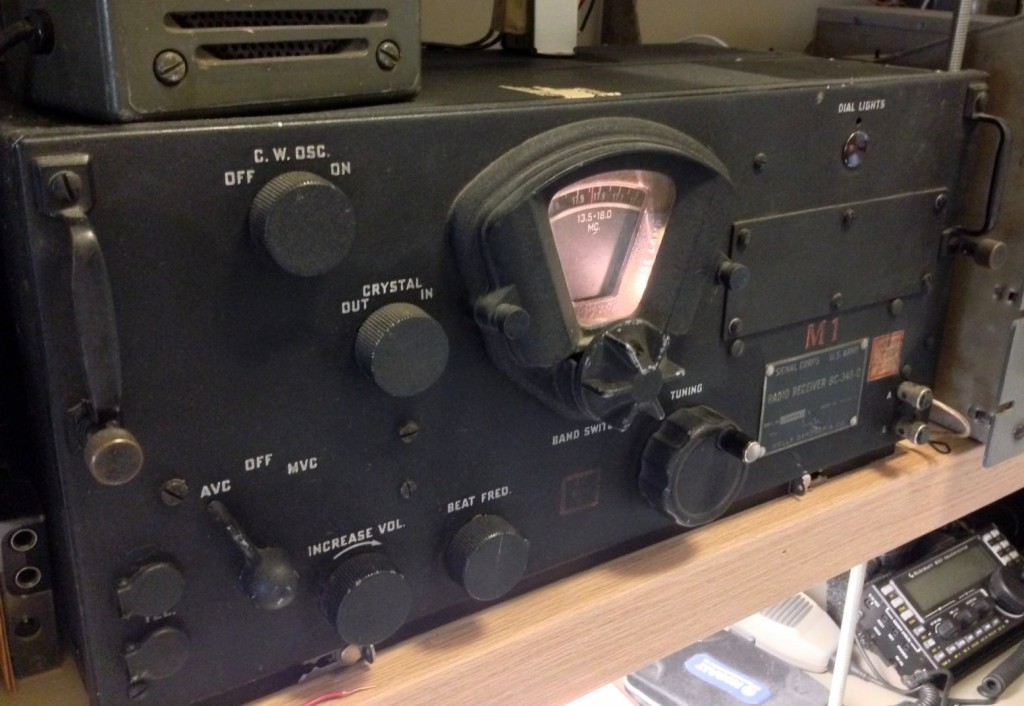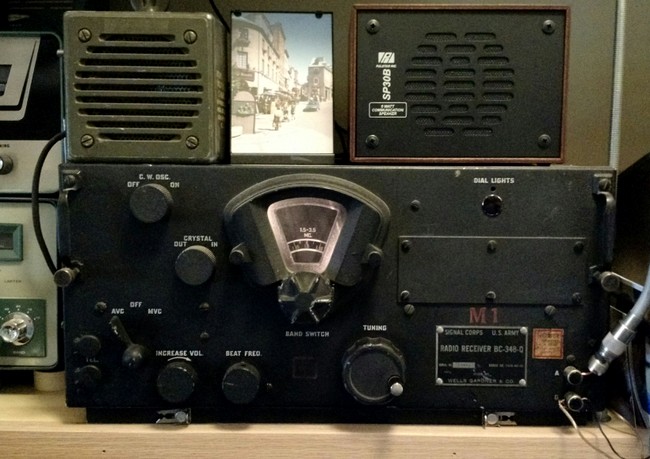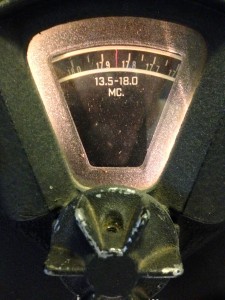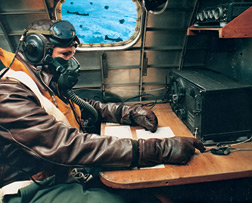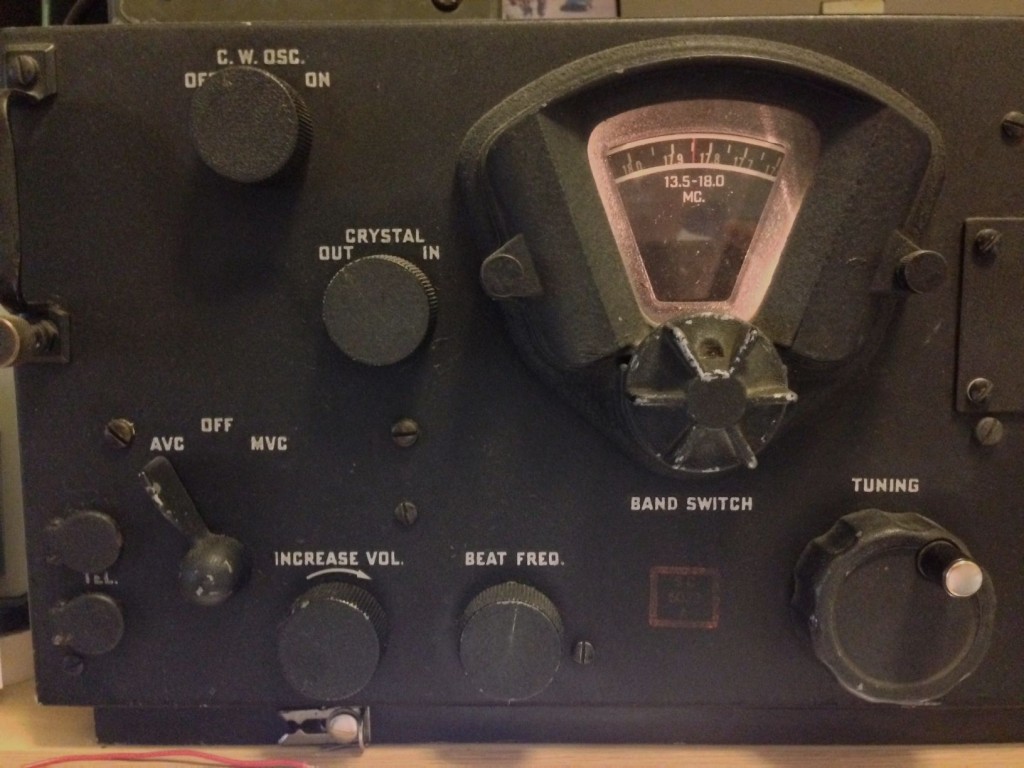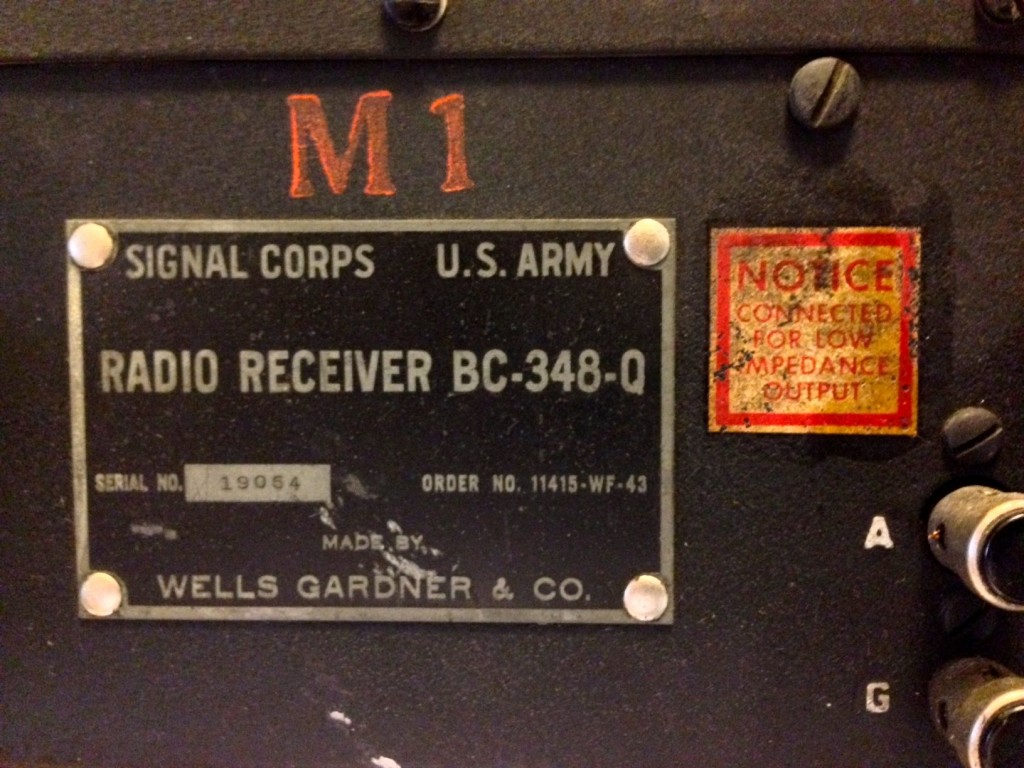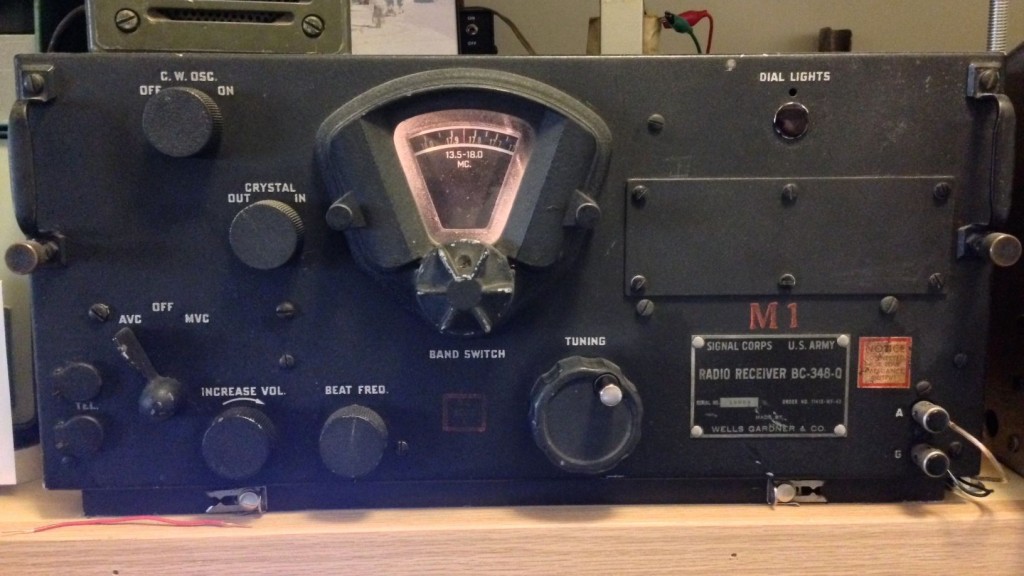Not much to say here other than it’s cold outside, but the BC-348 is keeping me warm inside. There are few radios in my collection I love more than this one.
Tag Archives: BC-348-Q
Listening to the Voice of Greece on the Signal Corps BC-348-Q
Yesterday evening, I warmed up my Signal Corps BC-348-Q and tuned to 9,420 kHz to see if the Voice of Greece happened to be on the air.
Fortunately, I was rewarded with a strong signal from Avlis.
The ‘348 did a fine job playing all that lovely Greek music, too. Though the WWII era ‘348 was never intended to be an HF broadcast band receiver, when paired with a good speaker, it sounds pretty darn amazing!
Here’s a short video (apologies for the dark image):
Listening to an AM broadcast station on the BC-348Q
I listen to my BC-348Q most days; in fact, it’s my preferred way of receiving my morning dose of Radio Australia on 9,580 kHz. And although you won’t find any medium-wave DXers endorsing this beefy antique rig, the BC-348, with its warm tone, has turned out to be a great shortwave receiver for casual listening.
When the armed forces commissioned the Signal Corps BC348 during WWII, the last thing they wanted was to have on-duty personnel listening to AM broadcast bands during, say, bombing sorties––so they purposefully omitted the medium-wave band. The band selections in the BC-348 are as follows:
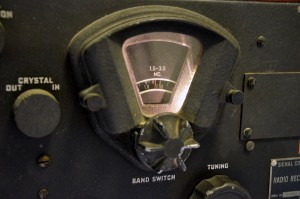 200-500 KC.
200-500 KC.- 1.5-3.5 MC.
- 3.5-6.0 MC.
- 6.0-9.5 MC.
- 9.5-13.5 MC.
- 13.5-18.0 MC.
But here in the comfort of my radio digs three-quarters of a century after WWII, I recently discovered that this classic “hot war” receiver does, indeed, pick up one of my local AM broadcast stations: WTZQ, and on 1,600 kHz. WTZQ has become one of my favorite stations; it’s one of the few in this region that’s still actually independently owned. The station’s playlist spans the decades, including, as they say, “everything from Glenn Miller to Steve Miller.” And, since they’re on “1.6 MC” they make the cut on the ‘348’s second-band selection. How cool is that?
 WTZQ’s station is a good thirty miles from here as the crow flies, so reception usually includes a little static on the wire antenna I’ve connected to the BC-348. Still, you might enjoy this short audio clip of WTZQ via the BC-348Q:
WTZQ’s station is a good thirty miles from here as the crow flies, so reception usually includes a little static on the wire antenna I’ve connected to the BC-348. Still, you might enjoy this short audio clip of WTZQ via the BC-348Q:
You can stream WTZQ, by the way, via their website. Enjoy!
SWLing with heavy metal: my Signal Corps BC-348-Q
I write a great deal about DSP portables, SDRs, and modern ham radio transceivers, but truth be known, my passion is for older rigs–ahem, much older–the antique “boat anchors” of the radio world.
Tuesday afternoon, I had a rather involved soldering project to do on behalf of my organization, Ears To Our World. While I worked, I decided to fire up my Signal Corps BC-348-Q to hear what was on the air. I promptly discovered Radio Exterior de España on 17,850 kHz–starting with their interval signal; REE, care of my BC-348-Q, kept me company while I soldered almost three hundred connections.
I listen to my BC-348-Q nearly every week. Usually, she’s tuned to 9,580 kHz for my morning dose of Radio Australia. In the winter, the ‘348’s tubes keep my little radio room a little warmer than the rest of my house. In the summer–well, I just sweat a little more.
I love this radio, and my other “boat anchors,” because when I listen to these rigs I can’t help but hear the past. I wonder about the others who have listened to the same radio, and what was happening in their lives as they listened…
The BC-348 series, for example, is well-known for its use in WWII allied bombers–these rigs were mounted in the likes of the B-17, B-24, B25, and others of the era. Indeed, mine still has the original clips on the base that anchored it to the radio operator’s onboard work table. The ‘348 was used as a long-distance liaison receiver during WWII.
The BC-348 series was built with simplicity, functionality, and serviceability in mind. It was built to withstand life on a B-17 bomber–the extreme vibration on start up, the extremely low temps in the upper atmosphere; it could be serviced by the radio operator in flight, if necessary. Its controls are simple, bare-bones, even. The tuning knob and analog dial are beautifully engineered and precise.
The ‘348 has a power switch, volume control (switchable from auto to manual gain), crystal filter, CW switch, beat frequency control, tuning knob, and a band switch (located just below the dial). The antenna and ground terminals are mounted on the front of the radio for easy accessibility. All controls are spaced so that the radio operator could use the ‘348 even while wearing thick cold-weather gloves.
You can’t do any medium wave DXing on the ‘348, however: this receiver was intentionally designed with the medium wave band omitted. Evidently, Uncle Sam wanted radio ops to be focused on communications instead of entertainment (but that’s okay; the government also made morale radios for the latter).
When I go to the Dayton Hamvention–or any hamfest, for that matter–it’s radios like the BC-348-Q I seek. Tube/valve radios sometimes lack the sensitivity and (digital) accuracy of modern tabletop shortwave receivers, but they make up for this in audio fidelity. As long as you have a properly-matched speaker, the sound can be…nothing short of amazing. Even though the ‘348 was never designed for robust audio, it still sounds richer and fuller than most modern tabletop radios. The sound is so warm it literally glows. Moreover, I’d be willing to wager that there are few modern receivers that can stand the test of time like these rigs.
If you buy one of these old beauties, you must be ready to service them; inevitably, a capacitor or tube will fail in time. But they just…keep…going.
I’m very much in debt to my good friend and radio elmer, Charlie (W4MEC) who kindly teaches me everything I need to know about these great rigs. He’s exceedingly patient, and that counts for much, as I’m not by nature technically inclined. But I do enjoy learning about these radios and how to service them; the romance of their history draws me in, and I simply can’t get enough.
Note: It’s important to work with a knowledgeable elmer/mentor or a professional repair technician when servicing these boat anchors, because, unlike with our modern radios, their high voltages can severely injure (or even kill) you if you don’t know exactly what you’re doing inside the chassis. This is repair work for the professional.
My BC-348-Q turns 71 this year–and I’m sure it has at least that many more years to go. I know that I’ll give it as much TLC as it can take. We must keep these still functioning pieces of history on the air.
If you, too, have boat anchors or antique radios alongside your modern rigs, please comment! I’d love to learn about your favorites. In other words, what heavy metal is in your shack?
Resources:
- Search for a used BC-348:
- More info on the BC-348-Q
Try that with an iPhone!
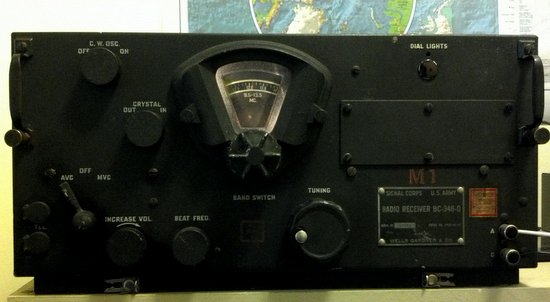
With the help and guidance of my good friend Charlie, we just repaired and aligned this BC-348-Q receiver. BC-348s were built to withstand the extreme temperatures (-60F) and vibrations on board the B-17 and other bombers, where they were used extensively in World War II. I picked this beauty up at the 2012 Dayton Hamvention for $40.
Next year, this radio will be 70 years old.
This morning, I have it tuned to Radio Australia’s Saturday Night Country on 11,660 kHz shortwave. It’s “connecting” to a wireless network over 9,800 miles away and producing beautiful, warm audio.
Try that with an iPhone.

